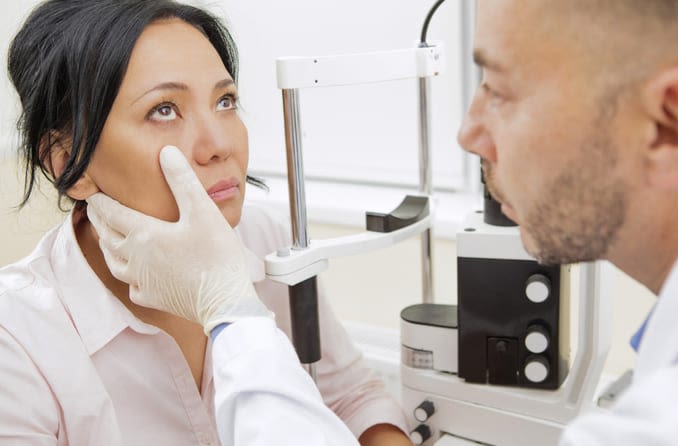The Importance of Regular Examinations with an Eye Doctor Optometrist
Wiki Article
Exploring the most up to date Technological Improvements in Optometry and What They Mean for Eye Doctors
From the precision of Optical Comprehensibility Tomography to the nuanced understandings offered by AI-driven analysis devices, these innovations are establishing new criteria in patient analysis and therapy. As these advancements permeate the method, eye doctors are faced with the difficulty of embracing these devices to boost client outcomes.Advancements in Diagnostic Devices
Advancing the area of optometry, developments in analysis tools have changed the means eye care specialists evaluate and detect aesthetic impairments and ocular conditions. The previous years has seen substantial technical improvements, making it possible for more extensive and accurate assessments. Optical Comprehensibility Tomography (OCT), for example, supplies high-resolution cross-sectional photos of the retina, enabling the early detection of illness such as glaucoma and age-related macular deterioration. This non-invasive imaging technique has become indispensable in contemporary optometric practice.One more trick development is the intro of innovative corneal topography systems, which map the surface area curvature of the cornea with accuracy. These tools are particularly valuable for suitable contact lenses and detecting corneal conditions. In addition, electronic retinal imaging has actually changed traditional ophthalmoscopy, offering thorough, panoramic sights of the retina that assist in complete visual examinations.
The growth of wavefront aberrometry has actually likewise been critical, allowing the evaluation of refractive errors with unrivaled precision (Opticore Optometry). This innovation aids in personalizing restorative lenses and improving medical outcomes for refractive surgical treatments. Jointly, these diagnostic advancements empower optometrists to supply exceptional client treatment, ensuring early treatment and tailored therapy approaches, ultimately enhancing visual health and wellness outcomes
AI in Person Management
Building on the foundation of innovative analysis devices, the consolidation of expert system (AI) in client administration stands for a transformative jump for optometry. AI systems are increasingly utilized to boost performance, precision, and customization in client treatment. By analyzing vast quantities of data, AI can recognize patterns and anticipate prospective eye problems, making it possible for optometrists to tailor interventions better. This capacity is critical in managing persistent eye conditions such as glaucoma and diabetic retinopathy, where early discovery and constant tracking are vital.In addition, AI-driven platforms promote structured person communications and administrative processes. Automated scheduling, virtual appointments, and individualized follow-up plans not just enhance individual complete satisfaction yet additionally enhance time management for practitioners. These systems can triage individuals based on the seriousness of their conditions, making certain that those in essential demand get prompt attention.
In addition, AI boosts decision-making by offering eye doctors with evidence-based referrals and therapy pathways. By incorporating data from electronic health records, AI tools use insights that notify clinical decisions, minimizing the threat of errors and boosting individual results. As AI remains to advance, its duty in client management will likely broaden, reshaping the landscape of optometric treatment.
Advances in Retinal Imaging
In the realm of optometry, retinal imaging has witnessed exceptional technological developments that are boosting analysis capabilities and individual care. Innovations such as Optical Coherence Tomography (OCT) and fundus digital photography have actually revolutionized exactly how eye doctors evaluate the retina and visualize. OCT, in certain, supplies high-resolution, cross-sectional pictures of the retina, the original source permitting for the thorough examination of its layers. This capacity is important for early discovery and administration of problems like glaucoma, diabetic retinopathy, and age-related macular deterioration.Boosted imaging techniques like OCT angiography are additional refining diagnostic precision. Opticore Optometry. Such improvements promote the identification of min retinal modifications that can indicate illness progression.
Furthermore, innovations in man-made intelligence are increasing retinal imaging by enabling automatic evaluation of big datasets. These systems aid eye doctors in determining patterns a sign of pathology, thus improving diagnostic precision and performance. Jointly, these advancements are transforming retinal imaging right into a cornerstone of modern eye treatment, improving end results and expanding therapeutic opportunities.
Teleoptometry's Expanding Duty
Teleoptometry is increasingly becoming a vital component of eye care, driven by developments in digital interaction and analysis tools. This is especially useful in country and underserved locations where accessibility to specialized eye treatment is often minimal.The combination of expert system (AI) further enhances teleoptometry, allowing the evaluation of aesthetic data and assisting in the detection of ocular conditions such as glaucoma and diabetic person retinopathy. AI-powered formulas can read here quickly interpret intricate imaging information, providing eye doctors with valuable understandings that bolster clinical decision-making.
Furthermore, teleoptometry supports connection of care through seamless assimilation with electronic health records (EHRs), allowing eye doctors to maintain thorough patient backgrounds. When consulting with different professionals., this makes certain that clients obtain consistent and personalized care even.
Despite these advantages, difficulties continue to be, including making certain information security and taking care of person assumptions. However, teleoptometry stands for a substantial stride towards even more easily accessible, efficient, and patient-centered eye care. As technology progresses, its function is poised to increase better.

Future Fads in Eye Treatment
A myriad of innovative trends is set to improve the future of eye treatment, driven by technological improvements and the evolving requirements of clients. One significant pattern is the assimilation of expert system (AI) in diagnostics, which promises to improve the accuracy and effectiveness of eye exams. AI formulas can assess large quantities of information from retinal pictures, possibly spotting problems like diabetic person retinopathy and glaucoma earlier than typical techniques.Additionally, customized medicine is acquiring traction in optometry, with genetic screening informing tailored treatment strategies. This technique aims to optimize client end results by customizing treatments to private genetic accounts. Wearable innovation, such as clever contact lenses, is additionally coming up, providing real-time monitoring of intraocular stress or sugar levels, thus offering constant understandings right into ocular and systemic health and wellness.
The adoption of increased fact (AR) and digital fact (VIRTUAL REALITY) in training and person education is another arising trend. These innovations offer immersive experiences that can improve understanding and abilities both for individuals and eye doctors. As these patterns evolve, eye doctors must stay abreast of technological developments to give innovative treatment, making sure better individual results and complete satisfaction in the vibrant landscape of eye care.
Final Thought

Jointly, these diagnostic advancements encourage eye doctors to deliver superior client treatment, making sure very early treatment and tailored treatment strategies, eventually boosting aesthetic health results.

As these technologies continue to progress, optometrists have to adjust and incorporate them into method, inevitably maximizing workflow efficiency and raising the standard of eye care provided to people.
Report this wiki page